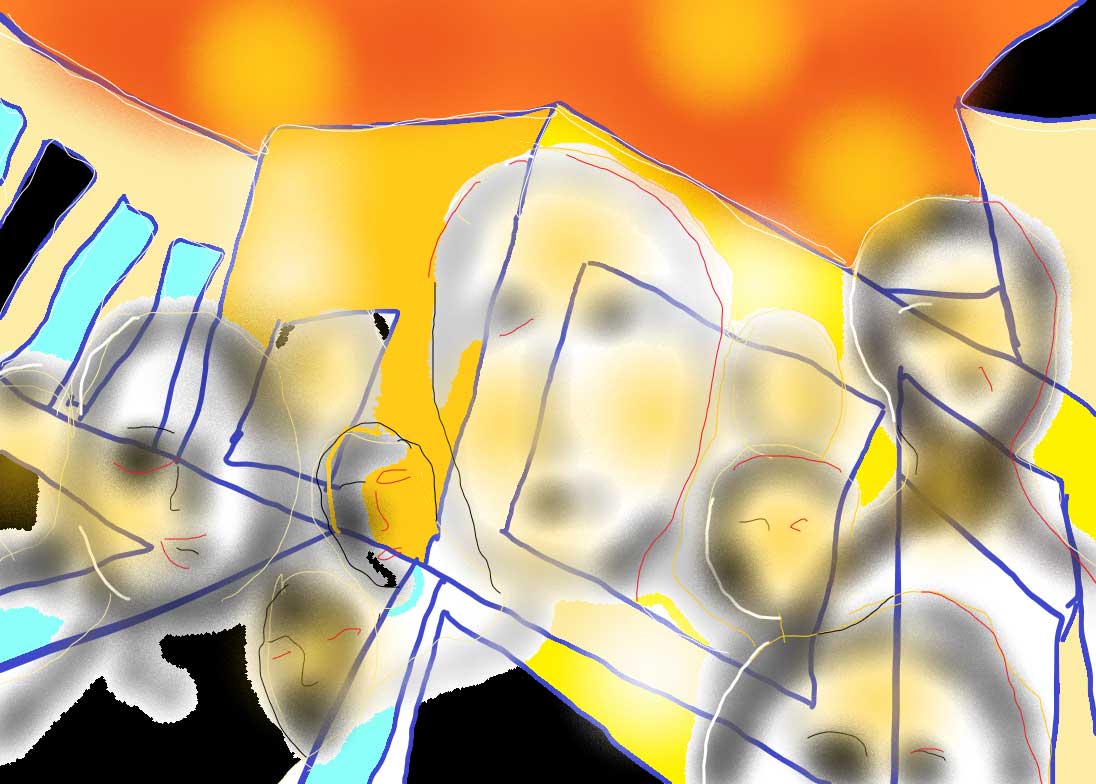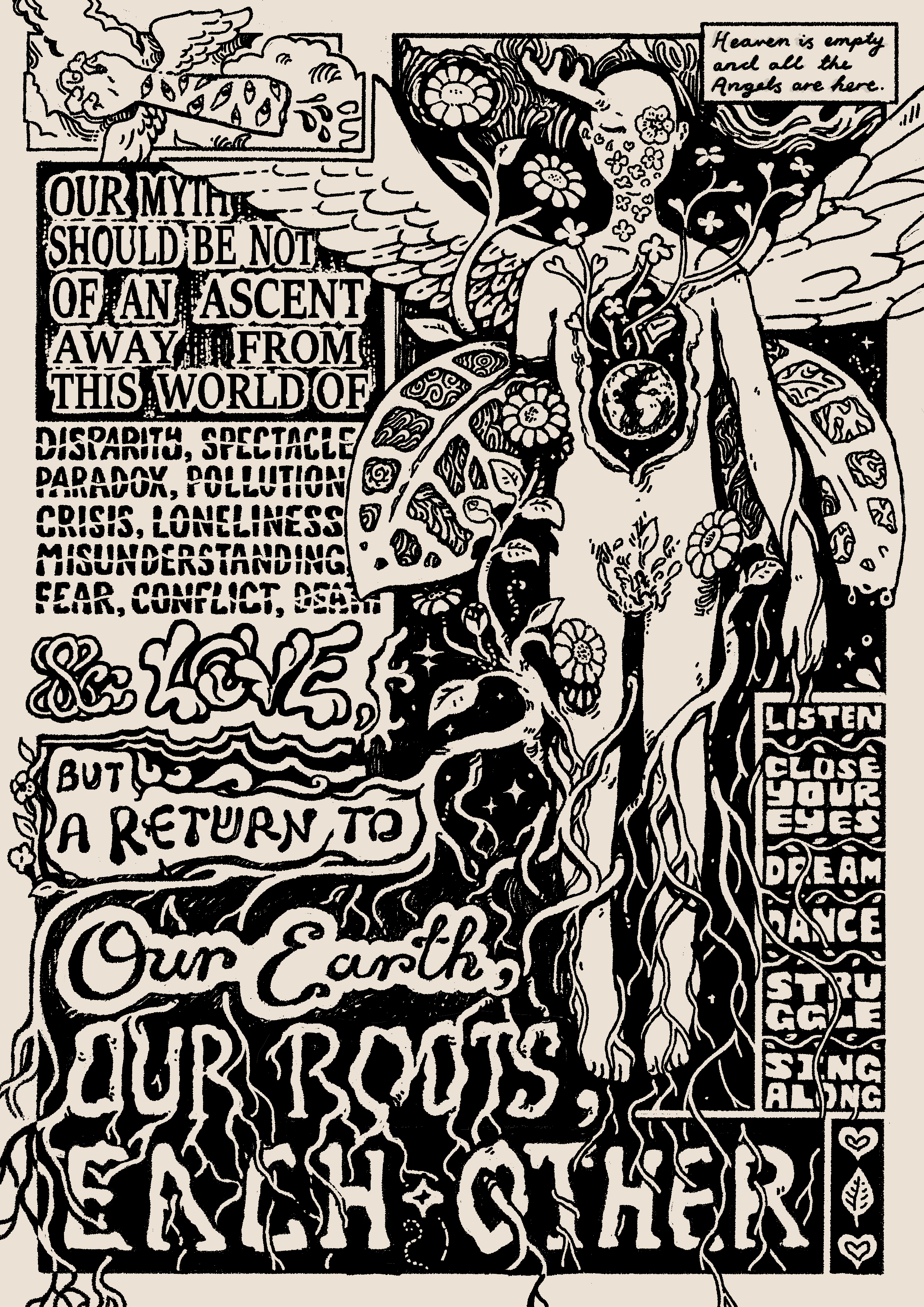For several thousand years, the dominant view of the arts and literature has been that they imitate reality. Even in the 21st century, well after the normative idea of mimesis has been challenged, toppled, and made fun of – even still, artists are pursuing some kind of realism.
Of course, the idea of reality itself has been greatly expanded. One hundred years ago the discovery of Relativity, and then later quantum physics, made the notion of what is real become very much broader. And today, the current icon of science, Stephen Hawking, talks casually about multi-universes. In much the same way, writers and artists now take almost anything as their subject matter, from the totally abstract to the hyper-concrete.
Both modernism and post-modernism combine elements that are archaic as well as perspectives that look far into the future. The literature of our time also has this Janus-faced quality, peering backwards and forwards simultaneously. Jorge Luis Borges (1899-1986), the Argentinian writer, is an interesting example of this duality. He changed the art of the short story, yet in many ways he was an Edwardian figure obsessed by his past and that of his family. High intelligence marks his fiction, but he also held personal views that were narrow and even repellent.
This particular number of Montreal Serai is devoted to literature, and Serai considers itself fortunate to lead the issue with an exclusive interview done with Jorge Luis Borges when he was alive, a man who made modern fiction assume the properties of both myth and high abstraction.
This interview was conducted in Buenos Aires by Montreal writer Mara Grey during the last period of Borges’ life, but the transcript of this important conversation had lain in Mara’s desk drawer until Serai persuaded her to share it with the larger world. The conversation allows the reader to see what an unusual combination of influences shaped Borges’ view of his art. Insight is mixed with strange remarks about “red Indians” and a view of Argentina as a “white man’s country.” Yet the verbal exchange between young woman and older, famous man also reveals the twists and turns in Borges’ view of reality.
And indeed the various visions of the real is what this issue of Montreal Serai is all about.
Anushree Varma’s short fiction “Diary of a Whore” shows us Eros as seen from the obverse side of the mirror, a mixture of desire, passion, pain and hurt.
Charlotte Hussey’s poem “WHAT BROUGHT ME TO POETRY. DESIRE?” brings alive a New York City scene in the 1970s when a young woman in an awkward situation feels, it seems, her impulse to write. Hussey’s other piece published here, “Lit 101,” describes, in a different context, an ironic perspective of a graffiti writer’s urge to assert a sense of presence in the world.
Serai’s own Rana Bose contributes the opening of a novel, in his prose piece “Mad and un-mad.” The reader is swept into the world of a man apparently directing traffic, a mentally whirling kaleidoscope that mirrors the state of the contemporary world.
The essay “Lost Urbanity” by Roger Jochym takes us to a more solid reality – or is it? Jochym analyzes in great detail the planning of Montreal’s new super-hospital and says that the finished project is the result of “outmoded 20th century design thinking” in which “Suburban degradation won.”
However, without a doubt, there is great visual beauty in the paintings of Renée Duval, a selection of which appear in vivid colour illustration here. Aphrodite, Siddhartha, and Quetzalcoatl appear in Duval’s works that capture the numinous presence of mythic forces.
“Geriatric Ward” – a poem by Nilambri Ghai – speaks of another reality, one that is all too alive in her picture of “words that tell you that no one comes.”
Tamara Nazywalskyj’s story, “Onion Women,” takes the reader to another territory — the milieu of young women in cities like Montreal. Here the realism of the piece and the zip of the narrator give us a strong feeling about growing up in today’s world.
Marie-Thérèse Blanc outlines a very powerful critique of the Marquis de Sade, a figure who has inhabited the imaginations of many modern intellectuals. Blanc says, of our own time, that “we are living out Sade’s idea of nature, which is nothing but an apology of individualism gone mad.”
“In the shadow of war” takes us to Smyrna, imagined by Loren Edizel, a vanished but very alive world.
The poems of Ilonii Martonfi, Merrianne Couture, Robert Paquin, and Dinh Le Doan convey the reader through a whole series of moods and feelings.
And in her short story, “Edith Mourning,” Greta Hofmann Nemiroff sketches a compelling portrait of a funeral, and of a marriage with its feelings of “rage and despair.”
All of these contributors have enriched this issue of Montreal Serai.
So, to them, and to you, Happy Holidays and a fulfilling 2015!









